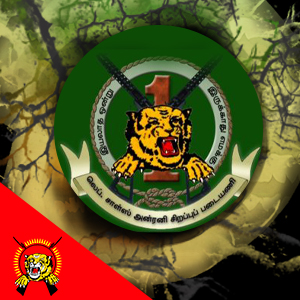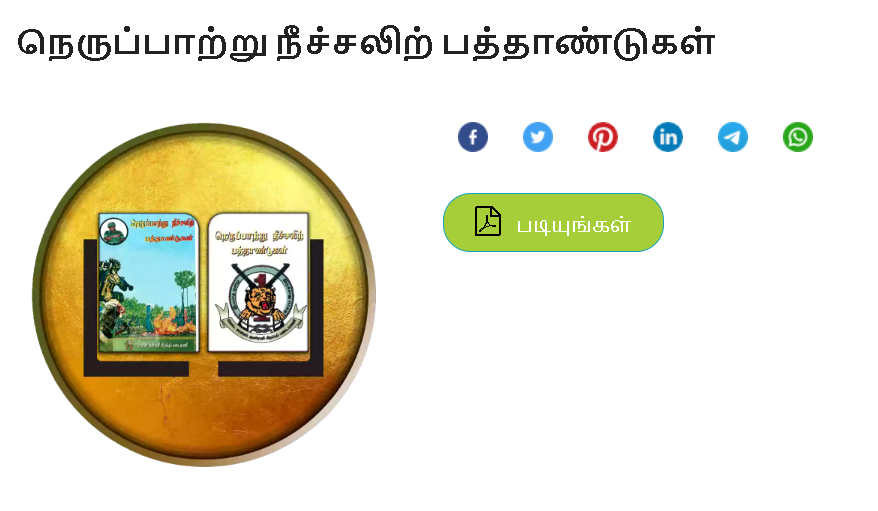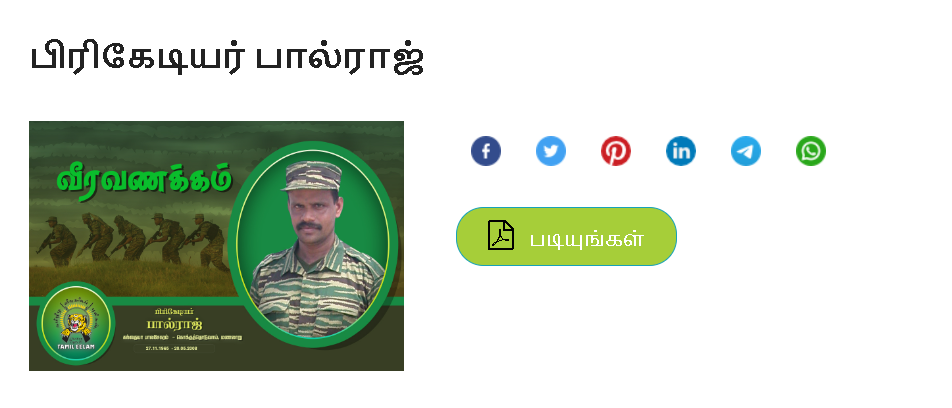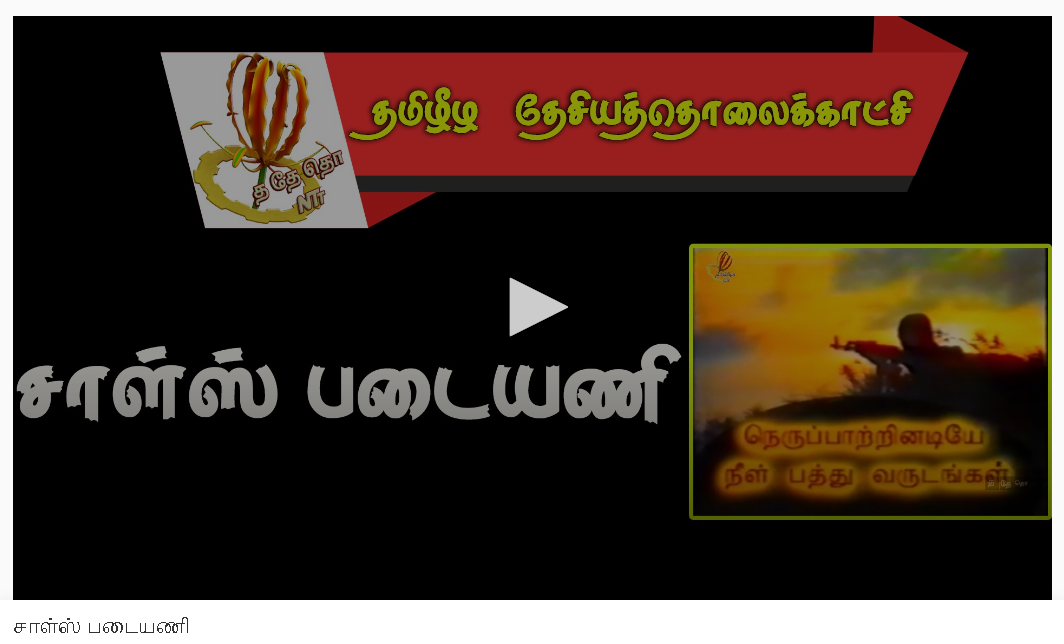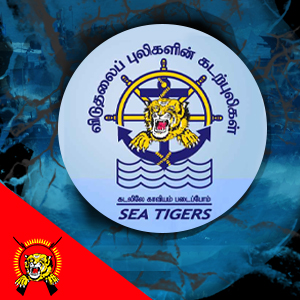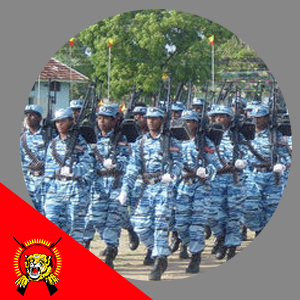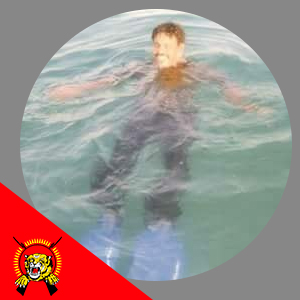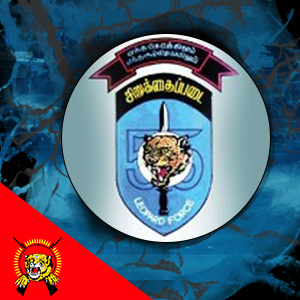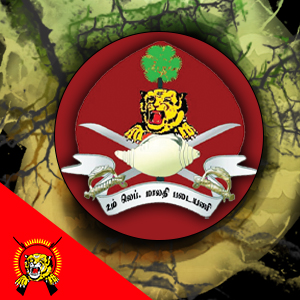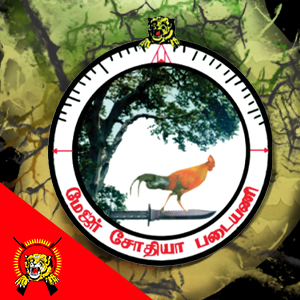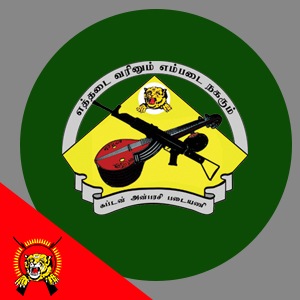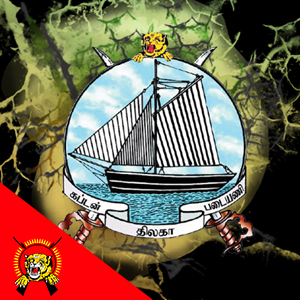சாள்ஸ் அன்ரனி சிறப்புப் படையணி!
முதலாவது மரபுவழிப் படையணி சாள்ஸ் அன்ரனி சிறப்புப் படையணி!
பயிற்சி தந்திரம் துணிவு வெற்றி என்ற தேசியத் தலைவரின் தாரக மந்திரத்துடன், 1991 ம் ஆண்டு ஏப்ரல்மாதம் 10 நாளில் தமிழரின் படைக் கட்டமைப்பின் புதிய படிநிலை வளர்ச்சியாக சாள்ஸ் அன்ரனி சிறப்புப் படையணி உருவாக்கம் பெற்றது.
தமிழீழ விடுதலைப் புலிகள் இயக்கத்தின் முதலாவது மரபுவழிப் படையணியாக கட்டமைக்கப்பட்ட இப் படையணிக்கு, இயக்கத்தின் முதலாவது தாக்குதல் தளபதி லெப். சீலன் அவர்களின் இயற்பெயரை தலைவர் சூட்டினார். சீலனின் துணிவு, பற்றுறுதி ,அறிவுக்கூர்மை, செயல்வேகம் ,ஈகம் ஆகிய அனைத்தையும் முன்னுதாரணமாக கொண்டு செயற்பட வேண்டும் என்ற உயரிய நோக்கு தலைவரால் போராளிகளுக்கு வலியுறுத்தப்பட்டது. சமர்க்கள நாயகன் பால்ராஜ் அவர்களை சிறப்புத் தளபதியாக நியமித்த தலைவர், புகழ்பூத்த தளபதிகள் ராஜன் ( றோமியோ – நவம்பர் ) அவர்களை தளபதியாகவும் ஜஸ்டின் அவர்களை துணைத் தளபதியாகவும் நியமித்து வழிநடத்தினார்.
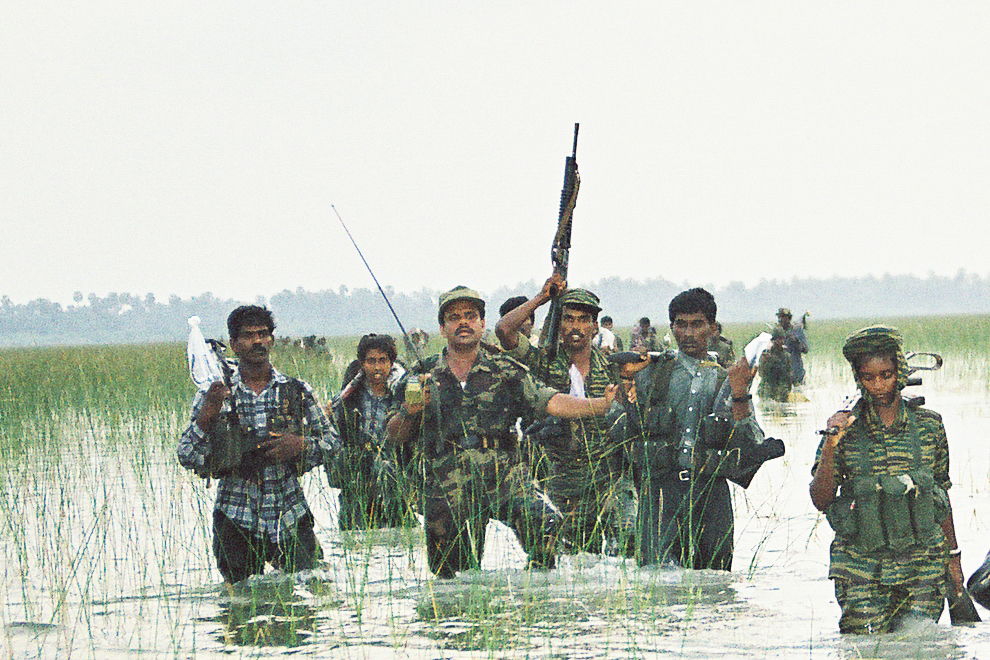
மிக உயர்ந்த உளவுரண் , தெளிவான திட்டமிடுதல், விரைவான நகர்வு திறன், களச் சூழலுக்கேற்ப சிறப்பு பயிற்சிகள் ,திறமான தகவல் தொடர்பு ,துல்லியமான வேவு , தேர்ந்த கள நிர்வாகம் ,அணித் தலைவர்களுக்கான தலைமைத்துவப் பயிற்சிகள் முதலான அனைத்தையும் உள்ளடக்கிய சிறப்புப் பயிற்சிகளில் படையணியை ஈடுபடுத்திய பால்ராஜ், களத்தின் எந்தச் சவால்களையும் எதிர்கொள்ளும் திறனுடன் படையணியை வளர்த்தார். வவுனியா பெரும் காடுகளூடாக வன்னிப் பெரு நிலத்தை முழுமையாக ஆக்கிரமிக்க சிறிலங்கா இராணுவம் மேற்கொண்ட வன்னி விக்கிரம -2 நடவடிக்கையை முறியடிக்கும் பாரிய தாக்குதலில் சாள்ஸ் அன்ரனி சிறப்புப் படையணி தனது முதல் தாக்குதலை தொடுத்தது . மிகவும் தீவிரமாக களமாடிய படையணியில் சிறப்பாக செயற்பட்ட போராளி கஜன் முதலாவதாக வீரச்சாவைத் தழுவி படையணியின் பாய்ச்சலுக்கு உத்வேகமூட்டினார். இச் சமரில் படையணியின் கனரக அணி உலங்கு வானூர்தியைச் சுட்டு வீழ்த்தி எதிரியின் படை நடவடிக்கைக்கு முற்றுப்புள்ளி வைத்தது. இவ் வெற்றிச் சமரில் எதிரியிடமிருந்து ஏராளமான ஆயுதங்களை போராளிகள் கைப்பற்றினர்.
1992 ம் ஆண்டு படையணியின் சிறப்புத் தளபதியாக கிண்ணி அவர்கள் பொறுப்பேற்று வவுனியா, நெடுங்கேணி பகுதிகளில் பல சமர்களில் படையணியை வழிநடத்தினார். இதன் பின்னர் வன்னியிலும் யாழ் குடா நாட்டிலும் பல்வேறு வலிந்த தாக்குதல்களை படையணிநடத்தி தாயகத்தின் கணிசமான பகுதிகளை எதிரியிடமிருந்து மீட்டது. 1994 ம் ஆண்டில் இளம் தளபதி கில்மன் அவர்கள் படையணியின் சிறப்புத் தளபதியாக தலைவரால் நியமிக்கப்பட்டு திருக்கோணமலை மாவட்டத்தில் படையணியை நடத்தினார். அங்கே பல தாக்குதல்களை வெற்றிகரமாக நடத்திய கில்மன் ,அங்கு வெடிவிபத்தில் வீரச்சாவைத் தழுவிக் கொண்டதைத் தொடர்ந்து படையணி மீண்டும் வன்னிக்கு வந்தது. 1995 ம் ஆண்டு மீண்டும் படையணியின் சிறப்பு தளபதியாக பால்ராஜ் பொறுப்பெடுத்து சூரியக்கதிர் , சத்ஜெய முதலான முறியடிப்புச் சமர்களில் படையணியை வழிநடத்தினார். தொடர்ச்சியாக களமாடிய படையணியில் பெருமளவிலான போராளிகள் வீரச்சாவடைந்தும் விழுப்புண்ணடைந்தும் இருந்த நிலையில், தலைவர் வன்னி மாவட்ட படையணியை சாள்ஸ் அன்ரனியுடன் இணைத்து படையணிக்கு புத்துயிரூட்டினார். 1996 ல் ஓயாத அலைகள் – 1 சமரில் எதிரியிடமிருந்து ஆட்டிலறி பீரங்கிகளை கைப்பற்றும் முக்கிய கடமையை தலைவர் படையணியிடம் வழங்கினார். இளம் தளபதி ராகவனின் தலைமையில் களமிறங்கிய அணி மிக விரைவாக செயற்பட்டு எதிரியிடமிருந்து இரண்டு ஆட்டிலறி பீரங்கிகளை கைப்பற்றி, கிட்டு பீரங்கி படையணி உருவாக்கத்திற்கு வழிவகுத்தது.
1997 ம் ஆண்டு பால்ராஜின் பாசறைத் தோழனும் சமர்க்கள நாயகனுமான தீபன் அவர்கள் படையணியின் சிறப்பு தளபதியாக பொறுப்பேற்றார். இளம் தளபதிகள் முகுந்தன் என்று சேகர், ராகவன் முதலானோரைக் கொண்டு ஜெயசிக்குறு முறியடிப்புச் சமரில் தீபன் படையணியை திறமுடன் வழிநடத்தினார். இச் சமரில் எதிரியின் ஒரு டாங்கி உட்பட பல கவச வாகனங்களை அழித்த படையணி கனரக ஆயுதங்களை கைப்பற்றியது. 1998 ல் சேகர் அவர்கள் படையணியின் சிறப்புத் தளபதியாகவும் ராகவனும் முகுந்தனும் தளபதிகளாக நியமிக்கப்பட்டு , உருத்திரபுரம் ,மாங்குளம், பனங்காமம் பகுதிகளில் பாதுகாப்பு கடமைகளில் ஈடுபட்டது. 2 ம் மாதம் உருத்திரபுரம் சண்டையில் திறனுடன் களமாடிய படையணி எதிரியின் டாங்கியையும் பல கவச வாகனங்களையும் அழித்து பெரும் வெற்றியை ஈட்டியது. இதன் பின்னர் தளபதியாக விமலன் அவர்களும் துணைத் தளபதியாக இராஜசிங்கம் அவர்களும் நியமிக்கப்பட்டனர் ஓயாத அலைகள்-2 சமரில் படையணியை சேகர் திறமுடன் வழிநடத்தினார். இச் சமரில் படையணியின் மூத்த அணித் தலைவர்கள் இராசநாயகம் , தமிழ்ச்செல்வன் , முதலானோரின் கனரக அணி காத்திரமான தாக்குதல்களை நடத்தி கிளிநொச்சியின் பெரும் பகுதிகளை மீட்டது. டிப்போ சந்தி களத்தில் தீவிரமாக எதிர்த்து நின்ற எதிரியை ராகவன் தலைமையில் இறங்கிய அணி மூர்க்கமான தாக்குதல் நடத்தி முறியடித்து களிநொச்சி நகரை முழுமையாக மீட்டது.
1999 ல் ராகவன் படையணியின் சிறப்புத் தளபதியாக பொறுப்பேற்று ஆனையிறவு பரந்தன் சுட்டதீவு களமுனையில் பாதுகாப்பு கடமைகளிலும் சிறப்புப் பயிற்சிகளிலும் படையணியை நடத்தினார். படையணியின் கனரக ஆயுதங்களை திறனுடன் பயன்படுத்தும் வகையில் இளம் தளபதி மதன் அவர்களின் பொறுப்பில் கனரக அணிகளை தனியாக ஒருங்கிணைத்து சிறப்பு பயிற்சிகளில் ஈடுபடுத்தினார். சுட்டதீவில் எதிரியின் பாரிய நடவடிக்கையை முறியடித்த படையணி ,அடுத்து பரந்தன் ஊரியான் பகுதிகளில் எதிரி மேற்கொண்ட பாரிய நடவடிக்கைகளையும் முறியடித்து வெற்றி வாகை சூடியது. இச் சமர்களில் தளபதிகள் விமலன், மயன், நேசன் ஆகியோர் சிறப்புடன் செயற்பட்டு வெற்றிக்கு வித்திட்டனர். ஓயாத அலைகள்-3 சமரில் ஒட்டுசுட்டானில் ராகவன் வீரச்சாவைத் தழுவிக் கொள்ள ,துணைத் தளபதி இராசசிங்கம் ஓமந்தை வரையிலான சமர்களில் படையணியை தொடர்ந்து வழிநடத்தினார். 1999 இறுதியில் படையணியின் சிறப்புத் தளபதியாக இராசசிங்கம் அவர்களும் தளபதியாக விமலன் அவர்களும் துணைத் தளபதியாக நேசன் அவர்களும் பொறுப்பேற்று பரந்தன் மீட்புச் சமரில் படையணியை வழிநடத்தினர் .
2000 ம் ஆண்டில் சில மாதங்கள் முகாவில் பகுதியில் கடமையில் நின்ற படையணி, பின்னர் குடாரப்பு ,இத்தாவில் தரையிறக்க சமர்களில் களமிறங்கியது . ஆனையிறவு வெற்றிக்கு பின், தொடர்ந்து தனங்கிளப்பு கிழக்கு அரியாலையில் களமிறங்கிய படையணி வெற்றிகரமாக யாழ்ப்பாணம் வரை சென்று பெரும் பகுதிகளை மீட்டது. 2000 ம் ஆண்டு ஆறாம் மாதம் இராசசிங்கம் இரணைமடு குளத்தில் ஏற்பட்ட விபத்தில் சாவடைந்ததைத் தொடர்ந்து, சிறப்புத் தளபதியாக சேகர் அவர்கள் மீண்டும் பொறுப்பேற்றார். இதே நாளில் யாழ் கனகம்புளியடி களத்தில் எதிரி மேற்கொண்ட பாரிய தாக்குதலை படையணியின் துணைத் தளபதி வீரமணி அதிரடித் தாக்குதல்களால் முறியடித்து பெரும் வாகை சூடினார். 2000 ம் ஆண்டு 9 ம் மாதம் நாகர்கோவில் மீதான வலிந்த தாக்குதலில் சேகர் படையணியை வழிநடத்தினார். தொடர்ந்த இச் சமரில் எதிரியின் பதுங்கித் தாக்குதலில் படுகாயமடைந்து, யாழ்வேள் மருத்துவமனையில் வீரச்சாவைத் தழுவிக் கொண்டார்.
ஒரு வருட இடைவெளியில் மூன்று சிறப்புத் தளபதிகளை படையணி இழந்து துயரத்தில் மூழ்கியிருந்தாலும் இம் மாவீரர்களுடைய சீரிய வழிநடத்தலில் வளர்ந்த படையணி சளைக்காமல் தனது பயணத்தை தொடர்ந்தது .சிறப்புத் தளபதியாக வீரமணி அவர்களும் தளபதியாக நகுலன் அவர்களும் துணைத் தளபதியாக கோபித் அவர்களும் படையணியைப் பொறுப்பேற்று திறமுடன் நடத்தினர். 2001 ம் ஆண்டு முதலாம் மாதம் இயக்கம் போர்நிறுத்தம் அறிவித்திருந்த நிலையில் எழுதுமட்டுவாள் ,நாகர்கோவில் பகுதிகளில் பெருமளவு துருப்புகளுடன் முன்னேறிய எதிரி வீரமணி உள்ளிட்ட எமது அணிகளை சுற்றிவளைத்த , பல முனைகளில் முறியடிப்புத் தாக்குதலை நடத்தி முற்றுகையை உடைத்து வெளியேறியது. தொடர்ந்து 4 ம் மாதம் முகமாலையில் பல்லாயிரக்கணக்கான துருப்பினருடன் எதிரி மேற்கொண்ட தீச்சுவாலை நடவடிக்கையை படையணி தீரத்துடன் போராடி முறியடித்தது. இச் சமரில் எதிரியிடமிருந்து ஏராளமான ஆயுதங்களை படையணி கைப்பற்றியது. இவ் வெற்றிச் சமரின் புகழுடன் படையணி தனது பத்தாம் ஆண்டு விழாவை தேசியத் தலைவர் மற்றும் தளபதிகளின் பங்கேற்புடன் சிறப்பாக கொண்டாடியது. 2002 ம் ஆண்டு போர்நிறுத்தம் அறிவிக்கப்பட்ட பிறகு, படையணியின் அணித் தலைவன் அமுதாப் தலைமையில் சிறப்பு பரப்புரையில் இறங்கிய படையணி போராளிகள் மக்களிடையே பெரும் எழுச்சியை உருவாக்கி ஏராளமான புதிய போராளிகளை இயக்கத்தில் இணைந்தனர். தொடர்ந்து யாழ் குடா நாடு, மன்னார், வவுனியா, திருக்கோணமலை , மட்டக்களப்பு முதலான அனைத்து பகுதிகளிலும் சிறப்பு அரசியல் வேலைத் திட்டங்களில் படையணி ஈடுபட்டது. 2002 ம் ஆண்டின் இறுதியில் சிறப்புத் தளபதியாக நகுலன் அவர்களும் தளபதியாக கோபித் அவர்களும் துணைத் தளபதியாக பல்லவன் அவர்களும் பொறுப்பேற்று படையணியை பயிற்சிகளிலும் பல்வேறு வேலைத் திட்டங்களிலும் தொடர்ந்து நடத்தினர்.
படையணியின் நிர்வாக திறன்களை மேம்படுத்தும் விதத்தில பல புதிய உட்கட்டமைப்புகளை கோபித்தும் நகுலனும் உருவாக்கி வளர்த்தனர். தலைவரின் ஆலோசனையின்படி படையணிக்கு கொடியும் சின்னமும் உருவாக்கப்பட்டன . கோபித் உருவாக்கிய “இயலாத ஒன்று இருக்காது எமக்கு ” என்ற வாசகம் படையணியின் முழக்கமாக்கப்பட்டது. 2004 ம் ஆண்டில் துரோகி கருணாவுக்கு எதிரான நடவடிக்கையில் படையணி கோபித்தின் தலைமையில் இறங்கி தீரத்துடன் போராடி கருணாவை வெளியேற்றியது. தொடர்ந்து பல்லவன் தலைமையில் தாக்குதல் தளபதி செங்கோலனின் விசேட அணி. மட்டு அம்பாறை காடுகளிலும் தொப்பிகல காட்டிலும் துரோகக் குழுக்களுக்கு எதிராக பல தாக்குதல்களை வெற்றிகரமாக நடத்தியது. 2004 ம் ஆண்டு இறுதியில் சுனாமிப் பேரலைகளால் எமது தேசம் தாக்கப்பட்ட போது உடனடி மீட்புப் பணிகளில் இறங்கிய படையணி தாக்குதல் தளபதி தென்னரசன் தலைமையில் புனரமைப்பு பணிகளில் முழுவீச்சுடன் செயற்பட்டது. படையணியின் தளபதி லெப்.கேணல் ராஜன் (ரோமியோ நவம்பர்) துரோகக் குழுக்களின் ஆதரவுடன் எதிரியின் ஆழ ஊடுருவும் அணியினர் தமிழீழத்தில் கிளைமோர் தாக்குதல்களை நடத்தி மக்களுக்கும் இயக்கத்திற்கும் அழிவை ஏற்படுத்திக் கொண்டிருந்த போது , அவர்களுக்கு எதிரான நடவடிக்கையில் படையணி களமிறக்கப் பட்டது. வவுனியா நெடுங்கேணி காடுகளில் தீவிரமான தேடுதலிலும் கண்காணிப்பிலும் ஈடுபட்ட படையணி நெடுங்கேணி காட்டில் எதிரியின் ஆழ ஊடுருவும் அணியைச் சுற்றி வளைத்து தாக்கி ஆயுதங்களை கைப்பற்றியதோடு இரு இராணுவத்தினரின் உடல்களை கைப்பற்றியது. 2005 ம் ஆண்டில் எமது மூத்த தளபதியும் புலனாய்வுத்துறைப் பொறுப்பாளருமான பொட்டு அம்மான் அவர்கள் தென்தமிழீழத்திற்கு பயணம் மேற்கொண்ட போது படையணியில் கோபித் தலைமையில் விசேட அணி அம்மானுடன் சென்று அங்கு பல்வேறு நடவடிக்கைகளில் சிறப்புடன் செயலாற்றியது .
2006 ம் ஆண்டு ஏழாம் மாதம் படையணியின் சிறப்புத் தளபதியாக கோபித் அவர்களும் தளபதியாக பல்லவன் அவர்களும் துணைத் தளபதியாக பிரதாபன் அவர்களும் பொறுப்பேற்றூ நடத்தினர். 8 ம் மாதம் முகமாலைச் சண்டையில் கோபித் படையணியை வழிநடத்தினார். பின்னர் 9 ம் மாதம் நடந்த சமரில் தாக்குதல் தளபதி குட்டி விழுப்புண்ணடைந்த நிலையிலும் வீரத்துடன் போராடி எதிரியின் முன்னேற்றத்தை தடுத்து நிறுத்தினார். அடுத்து 10 ம் மாதம் பல்லாயிரம் துருப்பினர் மற்றும் டாங்கி கவச வாகனங்களுடன் முன்னேறிய எதிரியை படையணி திறமுடன் எதிர்த்து முறியடித்தது. இவ் வெற்றிச் சமரை கோபித் திறமுடன் வழிநடத்தினார். இச் சமரில் எதிரியின் டாங்கியும் கவச வாகனங்களும் அழிக்கப்பட்டதோடு எதிரியின் 80 க்கு மேற்பட்ட உடல்களும் பெருமளவிலான ஆயுதங்களும் கைப்பற்றப்பட்டன. 2007 ம் ஆண்டில் பனங்காமம் , மன்னார் களமுனைகளில் எதிரியின் முன்னேற்றங்களை தடுத்து தீவிரமான தாக்குதல்களை நடத்தியது. இக் காலத்தில் படையணிக்கு வந்த ஏராளமான புதிய போராளிகளுக்கு பாவலன் தலைமையிலான போர்ப்பயிற்சி ஆசிரியர் குழு சிறப்பு பயிற்சிகளை வழங்கி படையணியின் போரிடும் ஆற்றலை வளர்த்தெடுத்தது. நெருக்கடியான களச்சூழலில் பெரிய தம்பனை , இரணைஇலுப்பைக்குளம், பனங்காமம் , பறையனாலங்குளம் முதலான பகுதிகளில் எதிரியின் பெருமளவிலான முன்னேற்றங்களை தடுத்து நிறுத்தியது.
சாள்ஸ் அண்டனி சிறப்பு தளபதி வீரமணி 2008 ம் ஆண்டு மத்தியில் படையணியின் சிறப்புத் தளபதியாக விமலன் அவர்களும் தளபதியாக குமணன் அவர்களும் துணைத் தளபதியாக அமுதாப் அவர்களும் பொறுப்பேற்று தொடர் சண்டைகளில் படையணியை நடத்தினர். முழங்காவில், வன்னேரிக்குளம் ,அக்கராயன்குளம் பகுதிகளில் பல்லாயிரம் எதிரித் துருப்பினரை உறுதியுடன் எதிர்த்து களமாடிய படையணி சில மாதங்களுக்கு எதிரியிடமிருந்து முன்னேற்றத்தை தடுத்து நிறுத்தியது. கிளிநொச்சியை பாதுகாத்த பெருஞ்சமரில் விமலன் படையணியை திறமுடன் வழிநடத்தினார்.
2009 ம் ஆண்டு கிளிநொச்சியிலிருந்து இயக்கம் பின்வாங்கிய பிறகு, பிரமந்தனாறு , வள்ளிபுனம் களங்களில் தீவிரமாக களமாடிய படையணி பல்லாயிரக்கணக்கான துருப்பினரைக் கொன்று குவித்து பெருமளவிலான ஆயுதங்களை அழித்தது. 3 ம் மாத இறுதியில் கட்டளைத் தளபதி கோபித்தும் துணைத் தளபதி அமுதாப்பும் உறுதியுடனும் போராடி வீரச்சாவைத் தழுவிக் கொண்டனர். தொடர்ந்து சிறப்புத் தளபதி விமலனும் தளபதி தமிழரசனும் படையணியை கேப்பாபிலவு , புதுக்குடியிருப்பு , மாத்தளன் சமர்களில் வழிநடத்தினர் . இச் சமர்களில் எதிரிக்கு பேரழிவை ஏற்படுத்திய படையணி முள்ளிவாய்க்கால் சமரில் பல்வேறு முனைகளில் கடுமையாக போராடியது . பதினெட்டு ஆண்டுகளாக நூற்றுக்கும் மேற்பட்ட சமர்களில் தொடர்ச்சியாக களமாடிய படையணியாக சாள்ஸ் அன்ரனி சிறப்புப் படையணி தமிழீழ வரலாற்றில் தடம் பதித்து நிற்கின்றது. படையணியின் தந்தை எனப் போற்றப்படும் மூத்த தளபதி பால்ராஜ் அவர்களும் தமிழீழத்தின் ஈடிணையற்ற மூத்த தளபதி தீபன் அவர்களும் படையணியின் இரு கண்களாகவும் இரு கரங்களாகவும் இருந்து படையணியை வழிநடத்தி வளர்த்தனர். தமிழீழத்தின் மூத்த தளபதிகள் அனைவரின் கட்டளைகளிலும் தமிழீழத்தின் அனைத்து மாவட்டங்களிலும் களமாடிய படையணியாக சாள்ஸ் அன்ரனி சிறப்புப் படையணி திகழ்கின்றது. நேரடிச் சமர்கள் மட்டுமின்றி புகழ்பெற்ற வேவு நடவடிக்கைகளிலும் படையணி சிறப்புடன் செயற்பட்டது.
படையணியின் புகழ்பூத்த வேவு அணி லீடர்களான மதன் , வீரமணி, கோபித் , குட்டி, இலக்கியன் , தமிழ்ச்செல்வன், பிரதாபன் , மதுரன் , தென்னரசன் ,மோகன் , வான்மீகி ,சிவபாலன், பிரபு, கண்ணன் ,தமிழ்நாடன் ,இளஞ்சுடர் , மாதவன் முதலான துடிப்புமிக்க வேவுப்புலிகள் பல்வேறு வேவு நடவடிக்கைகளில் திறமுடன் செயற்பட்டு பல சமர்களின் வெற்றிக்கு வழிகோலினர் . இராணுவ கட்டுப்பாட்டு பகுதிகளில் பல உள் நடவடிக்கைகளிலும் படையணி சிறப்புடன் செயலாற்றியது . 1995 ம் ஆண்டு இயக்கம் யாழ் குடா நாட்டிலிருந்து பின்வாங்கிய பிறகு, படையணியின் சிவாஜி மாஸ்டர் தலைமையில் ஒரு அணி இராணுவத்தின் பகுதிக்குள் இருந்து பல தாக்குதல்களை வெற்றிகரமாக நடத்தியது. இராசநாயகத்தின் தலைமையில் இன்னொரு விசேட அணி யாழ்ப்பாணம் வலிகாமம் பகுதிகளில் எதிரி மீது பல தாக்குதல்களை வெற்றிகரமாக நடத்தி விட்டு, வன்னிக்கு திரும்பியது. வவுனியா மணலாறு மாவட்டங்களில் இராணுவ கட்டுப்பாட்டு பகுதிகளில் படையணி போராளிகள் பல தாக்குதல்களை நடத்தநடத்தினர் .
2001 ம் ஆண்டு இறுதியில் யாழ் பருத்தித்துறையில் படையணியின் அணித் தலைவர்கள் மதுரனும் மோகனும் சிறிலங்கா இராணுவத் தளபதி மீது கிளைமோர்த் தாக்குதலை வெற்றிகரமாக நடத்தினர். 2006 ம் ஆண்டு இளம் அணித் தலைவன் படையரசன் தலைமையில் ஒரு அணி பல்வேறு செயற்பாடுகளில் ஈடுபட்டது. மன்னாரில் படையணியின் தாக்குதல் தளபதி றமணன் புலனாய்வுத் துறை போராளிகளுடன் இணைந்து பல தாக்குதல்களை வெற்றிகரமாக நடத்தினார். படையணியிலிருந்து முப்பதிற்கும் மேற்பட்ட கரும்புலிகள் உருவாகி பெரும் தாக்குதல்களை வெற்றிகரமாக நடத்தி போராட்டத்திற்கு வெற்றி தேடித் தந்தனர்.
மேஜர் தனுசன் முதலான தரைக் கரும்புலிகளும் மேஜர் தீக்கதிர், மேஜர் தமிழ்த்தென்றல் முதலான கடற் கரும்புலிகளும் கண்ணன் முதலான மறைமுகக் கரும்புலிகளும் வெற்றிகரமாக செயற்பட்டு படையணிக்கு பெருமை சேர்த்தனர். சண்டைகள் மட்டுமின்றி நிர்வாகம், அரசியல், கலைநிகழ்ச்சிகள், விளையாட்டு ஆகிய அனைத்து துறைகளிலும் படையணி சிறப்பாக செயல்பட்டது. படையணியின் நிர்வாகப் பொறுப்பாளர்களாக சிவாஜி , மதன், தில்லை குட்டி, முத்தழகு , தமிழரசன் , தேவன் முதலானோர் சிறப்புடன் கடமையாற்றி படையணியின் வளர்ச்சிக்கு பெரும் பங்காற்றினார். கிளிநொச்சி கோவிந்தன்கடை சந்தியில் படையணிக்காக மாவீரர் நினைவாலயம் எழுப்பி படையணியின் அனைத்து மாவீரர்களின் திருவுருவப் படங்கள் மக்களின் அஞ்சலிக்காக வைக்கப்பட்டன. 2200 க்கும் மேற்பட்ட படையணி மாவீரர்கள் தாயகத்தின் விடுதலைக்காக களமாடி தமது இன்னுயிர்களை ஈந்து படையணியின் வெற்றிக்கும் வளர்ச்சிக்கும் அரும் பங்காற்றினர். 50 க்கும் மேற்பட்ட லெப். கேணல் தர தளபதிகள் படையணியின் வெற்றிக்காக பெரும் பங்களிப்பைச் செய்தனர்.
படையணி தமக்கென அரசியல் பொறுப்பாளரையும் மக்கள் தொடர்பாளரையும் கொண்டிருந்து மக்கள் மத்தியில் தனித்துவமான ஆதரவாளர்களை கொண்ட படையணியாக சாள்ஸ் அன்ரனி சிறப்புப் படையணி விளங்கியது. படையணியின் பல ஆதரவாளர்கள் களமுனைகளில் ஆபத்தான சூழ்நிலைகளில் போராளிகளுடன் இணைந்து செயல்பட்டு போராட்டத்தின் வெற்றிக்கு பெரும் பங்களிப்பு செய்தனர். படையணியின் அணிகள் களத்தில் ஒன்றுகூடும் போது , படையணியின் மருத்துவ பொறுப்பாளனும் இசைக் கலைஞனுமாகிய மேஜர் பிரியக்கோன் பெயரில் கலைநிகழ்ச்சிகள் நடத்தி மகிழ்ந்திருப்பர். இந் நிகழ்ச்சிகளில் எமது படையணியின் போராளிக் கலைஞர்கள் எழுச்சிப் பாடல்களை பாடியும் நகைச்சுவை நிகழ்ச்சிகளை நடத்தியும் அனைவரையும் மகிழ்விப்பர். இதன் தொடர்ச்சியாக போர்நிறுத்த காலத்தில், நாடு கடந்த தமிழ் உறவுகளின் பேருதவியால் படையணியில் இராகசீலம் இசைக்குழு உருவாக்கம் பெற்றது. இளம் அணித் தலைவர்கள் சிலம்பரசன் , கலைச்செல்வன் தலைமையில் நவீன இசைக் கருவிகளில் பயிற்சி பெற்ற போராளிகள் மக்களிடையேயும் போராளிகளிடையேயும் இசை நிகழ்ச்சிகளை நடத்தி பெரும் எழுச்சியூட்டினர் .
விளையாட்டுத் துறையிலும் படையணி போராளிகள் மிகுந்த ஆர்வத்துடன் ஈடுபட்டு தேசியத் தலைவரிடமும் மூத்த தளபதிகளிடமும் பரிசுகளையும் பாராட்டுகளையும் பெற்று படையணிக்கு பெருமை சேர்த்தனர் . லெப். சீலன் நினைவுக் கோப்பை கால்பந்து போட்டிகள் , லெப். கேணல். ராகவன் நினைவு வலைபந்து ( voly ball ) போட்டிகள் முதலான பல விளையாட்டு போட்டிகளை போராளிகளிடையேயும் மக்களிடையேயும் படையணி நடத்தியது. கவியரங்கம் , பட்டிமன்றம், சிறு நாடகங்கள் ஆகியவற்றிலும் படையணி போராளிகள் பங்குபற்றி பாராட்டுக்களை பெற்று படையணிக்கு பெருமை சேர்த்தனர். படையணியின் தாக்குதல் தளபதி வரதன் தலைமையில் செயற்பட்ட கல்விக் குழு போராளிகளுக்கு அடிப்படை ஆங்கிலம், கணிதம், பொது அறிவு, அரசியல் முதலான பல விடயங்களில் போராளிகளுக்கு கற்பித்தது .
மூத்த தளபதி தீபன் அவர்களின் வழிகாட்டுதலில் ” மேஜர் றோய் அதிகாரிகள் பயிற்சி கல்லூரி ” யை துவங்கி போராளிகளுக்கு சிறப்புப் பயிற்சிகளை வழங்கியது. மேலும் ” அக்கினி வீச்சு ” என்ற கையெழுத்து இதழை நடத்தி போராளிகளின் கவிதைகள் ஓவியங்கள் , மாவீரர் நினைவுகள் , கட்டுரைகள் ,பொதுஅறிவுத் தகவல்கள் முதலான ஆக்கங்களை வெளியிட்டு அவர்களின் படைப்பாற்றலை வளர்த்தது. படையணியின் பத்தாண்டு கால போர் வரலாற்றை தொகுத்து ” நெருப்பாற்று நீச்சலில் பத்தாண்டுகள் ” என்ற நூலை படையணி வெளியிட்டது . மேலும் படையணியின் முன்னோடி லெப். சீலன் அவர்களின் போராப்ட வாழ்வைச் சித்தரிக்கும் வகையில் ” களம் கலங்கும் காலக்கருவி ” என்ற நூலும் படையணியால் வெளியிடப்பட்டது. சீலன் அவர்களின் நினைவைப் போற்றும் வகையிலும் படையணியின் வீரச் செயற்பாடுகளை போற்றும் வகையிலும் புதுவை இரத்தினதுரை அவர்களால் எழுச்சிப் பாடல்கள் எழுதப்பட்டு தமிழீழ இசைக் குழுவை இசையமைத்து சாந்தன் முதலான தமிழீழத்தின் புகழ்பெற்ற பாடகர்களால் பாடப்பெற்று படையணியால் வெளியிடப்பட்டது. 2007 ம் ஆண்டு தமிழீழத் தேசியத் தொலைக்காட்சி விவரணப்படம் படம் ஒன்றை வெளியிட்டு படையணிக்கு பெருமை சேர்த்தது.
தேசியத் தலைவர் வேலுப்பிள்ளை பிரபாகரன் அவர்களின் சீரிய வழிகாட்டுதலோடும் தலைவரின் தனிப்பட்ட ஆலோசனைகள் அறிவுறுத்தல்களோடும் தொடர்ந்து பயணித்த படையணி , தலைவரின் சீரிய எண்ணங்களுக்கு செயல் வடிவம் கொடுத்து தொடர்ந்து போராடியது . மிகவும் சவாலான களங்களில் தலைவரால் நம்பிக்கையுடன் களமிறக்கக்கூடிய படையணியாக சாள்ஸ் அன்ரனி சிறப்புப் படையணி விளங்கியது. பல தருணங்களில் படையணி சில பத்துகள் எண்ணிக்கையான போராளிகளைக் கொண்ட சிறு அணியாக மாறிய போது தலைவர் உடனடியாக கவனமெடுத்து இயக்கத்தின் பல்வேறு பிரிவுகளிலிருந்து போராளிகளை சாள்ஸ் அன்ரனியில் இணைத்து மீண்டும் மீண்டும் புத்துயிரூட்டி வளர்த்த படையணியாக சாள்ஸ் அன்ரனி சிறப்புப் படையணி திகழ்கின்றது. மிகுந்த உளவுரணுடன் தலைவராலும் தளபதிகளாலும் வளர்த்தெடுக்கப்பட்ட இப் படையணி போராட்ட காலத்தில் தனது பங்கை காத்திரமாக ஈழ மண்ணுக்கு வழங்கியது என்றால் அது மிகையாகாது!
சாள்ஸ் அன்ரனி சிறப்புப் படையணியின் படங்கள் காண்பதற்கு


